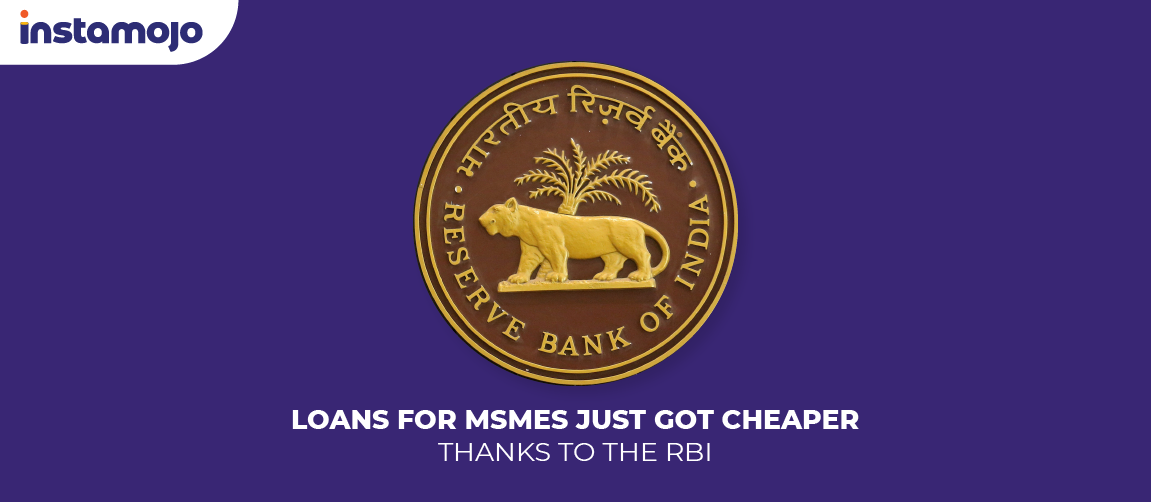The Reserve Bank of India (RBI) just ensured that loans for MSMEs get cheaper by announcing a reduction in repo rates (5.75%).
Repo rate is the rate at which the RBI lends money to banks in case of a shortage of funds. Monetary authorities like RBI use repo rates to control inflation in the country.
The repo rate cut by the RBI is set to boost India’s economy by enabling affordable loans to MSMEs, exporters and home buyers. The same day, the RBI had eliminated all charges on NEFT and RTGS transactions to promote digital payments among small businesses.
How did loans for MSMEs get cheaper?
When the RBI reduces interest rates, MSME loans get cheaper by a good percentage. When the repo rate is increased, banks will have to pay higher interest to the RBI. This, in turn, makes the banks levy an increased rate of interest on the businesses and customers they lend too. This can lead to:
- The customers taking credit from banks
- This also leads to a shortage of money in the economy and less liquidity
Continuing the streak to prioritise MSME sector over other industries growth, RBI reduced repo rates to increase the availability of money for businesses.
Other RBI Incentives for MSME Sector:
Over the past few years, the RBI has taken several initiatives to help small businesses get better access to finance to run operations. Some of these important initiatives were:
1. Restructuring MSME Loans up to INR 25 Crores:
On February 11th, The Reserve Bank Of India restructured loans for MSMEs worth Rs 1 Lakh crore. The restructuring came as a one-time scheme that allowed defaulting MSMEs to revise the loan tenor and interest rate for up to Rs. 25 Crore.
2. The Introduction of the Government E-marketplace:
In a bid to boost MSMEs that wanted to sell to the Government, the RBI and the Government proposed the GeM or The Government e-marketplace. This is an online portal for Government officials and agencies to buy and procure products and services from an online marketplace.
3. Introducing Digital POS machines:
To promote digital payments among small businesses, RBI has encouraged the use of digital POS. This is a payment method wherein customers can use QR codes as POS machines to make payments.
4. Increasing GST Exemption limit from INR 25L – 40L:
The GST Council and RBI decided to double the current GST limit for MSMEs to ₹40 lakhs from the previous ₹20 lakhs. The composition scheme increased to 1.5 Cr From 1 Cr.
5. Eliminating NEFT and RTGS charges:
Recently, The RBI dropped all NEFT and RTGS charges in a bid to boost digital payments for small businesses. The RBI levies minimum charges to banks on banks for any online NEFT and RTGS transactions routed through payment gateways. Through this, banks levy a small charge on customers for every transaction. With the new rule, banks will be required to pass these benefits to its customers as well.
Apart from these recent initiatives, the Government and the RBI have provided incentives to the MSME sector to ease their access to finance.
From introducing 59-minute loan schemes to increasing credit guarantee to Rs. 50,000 Cr, there is hope for the MSME sector in the future of India’s financial economy.
News Update as on 5th October, 2019:
Recently, about half a dozen public sector banks have further reduced lending rates by up to 25 basis points following a cut in the key policy repo rate by the RBI last month.
With Instamojo, you can get working capital loans to boost your business. Start transacting today to avail lightning-fast payouts.

